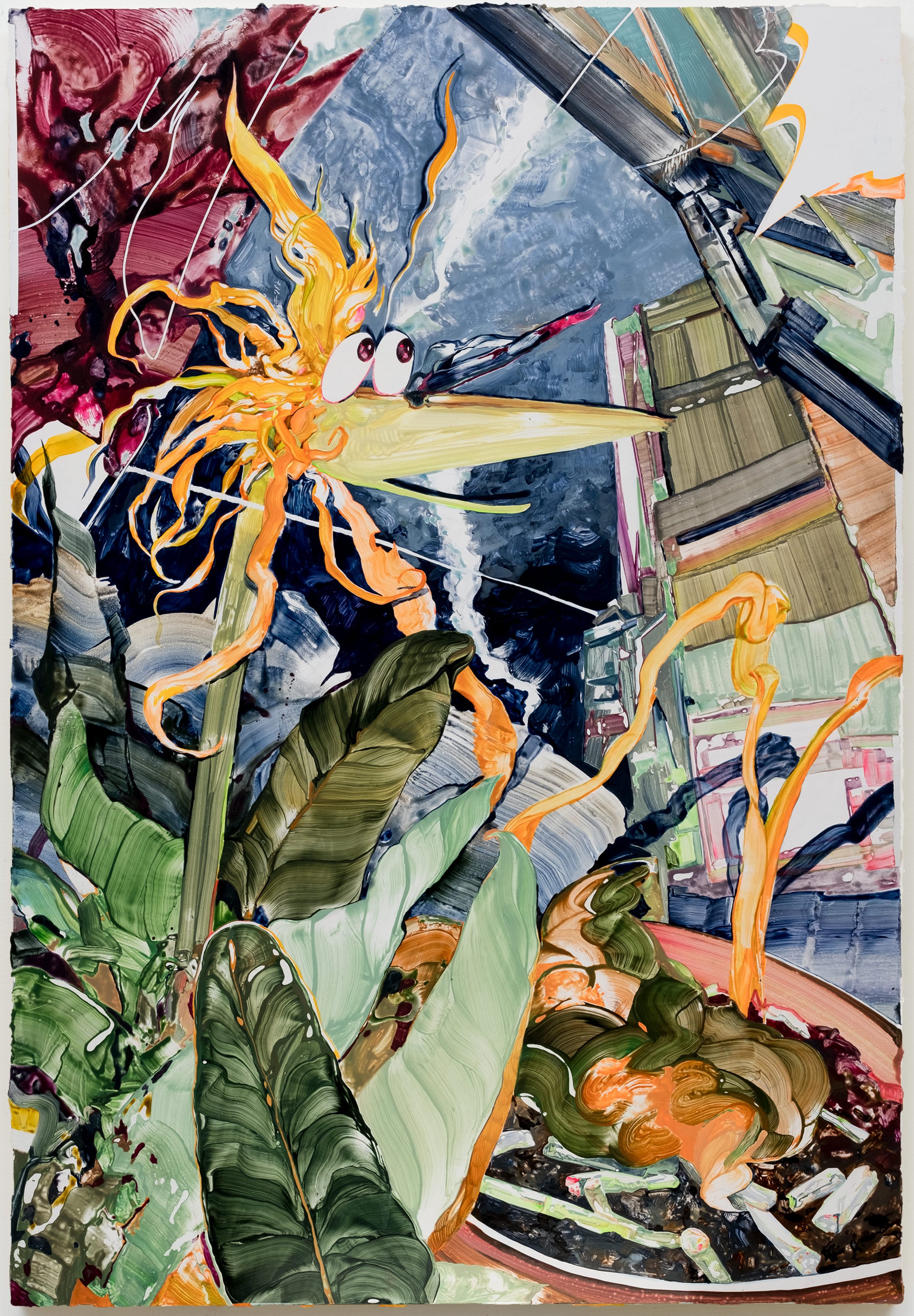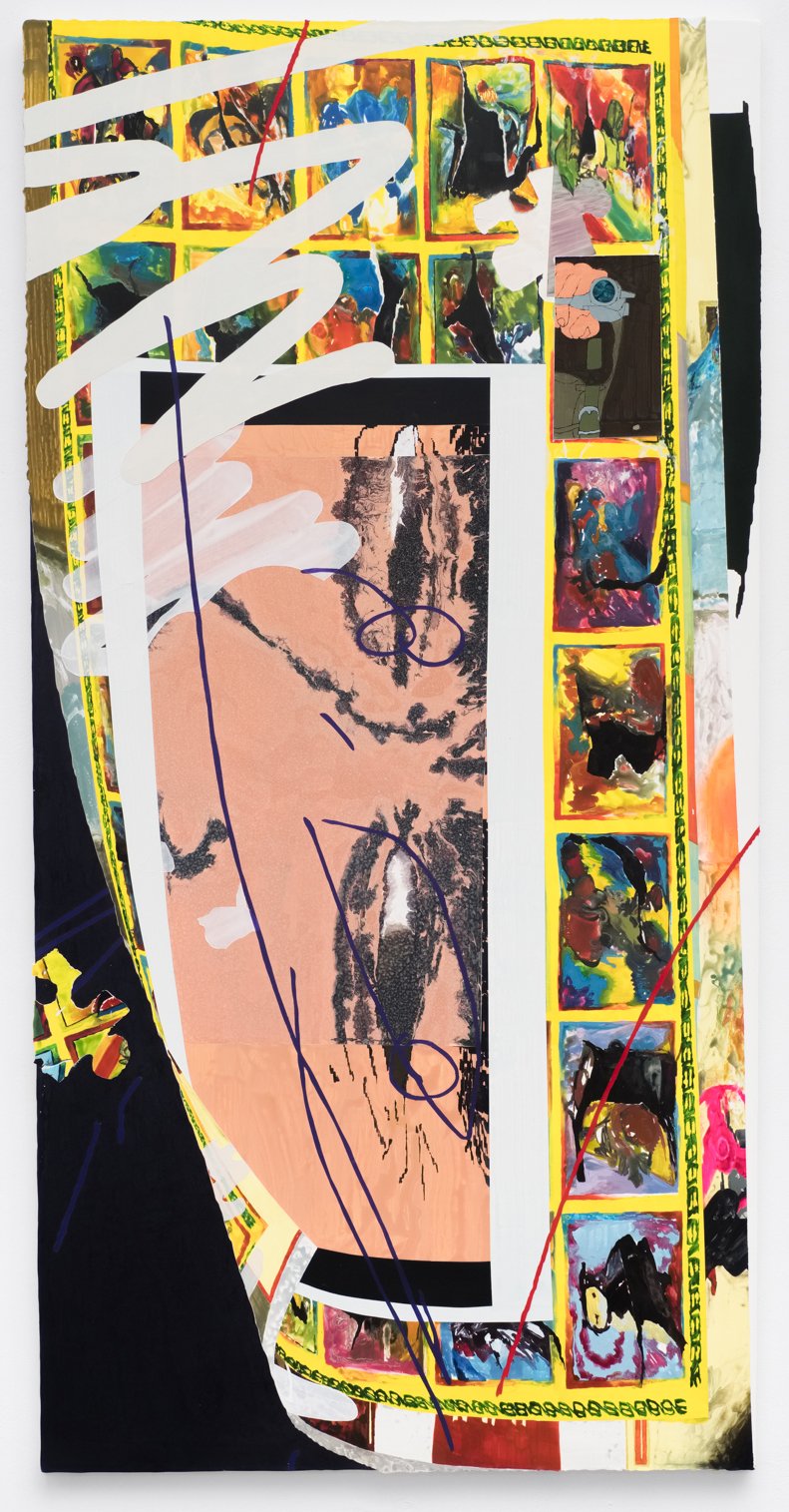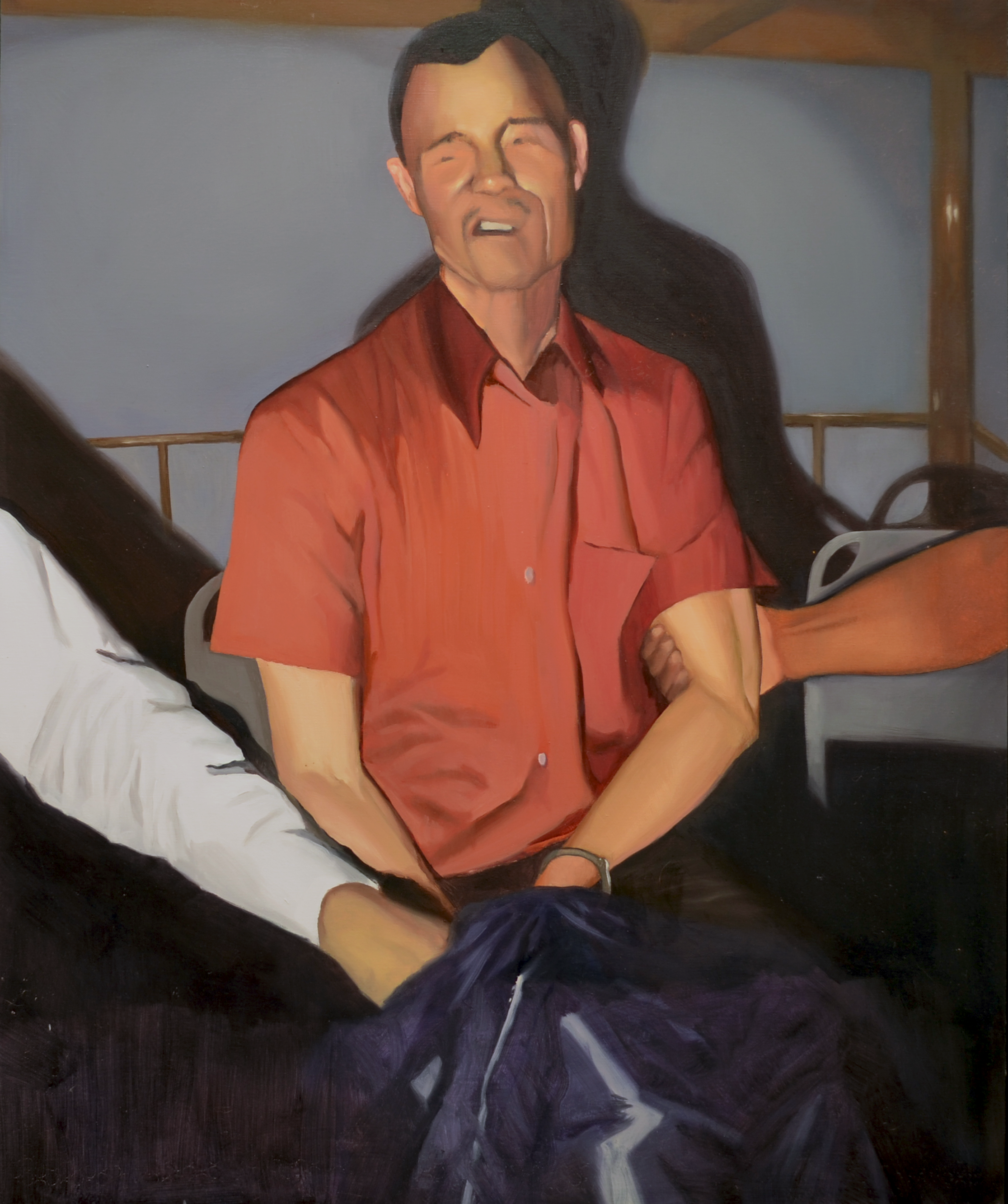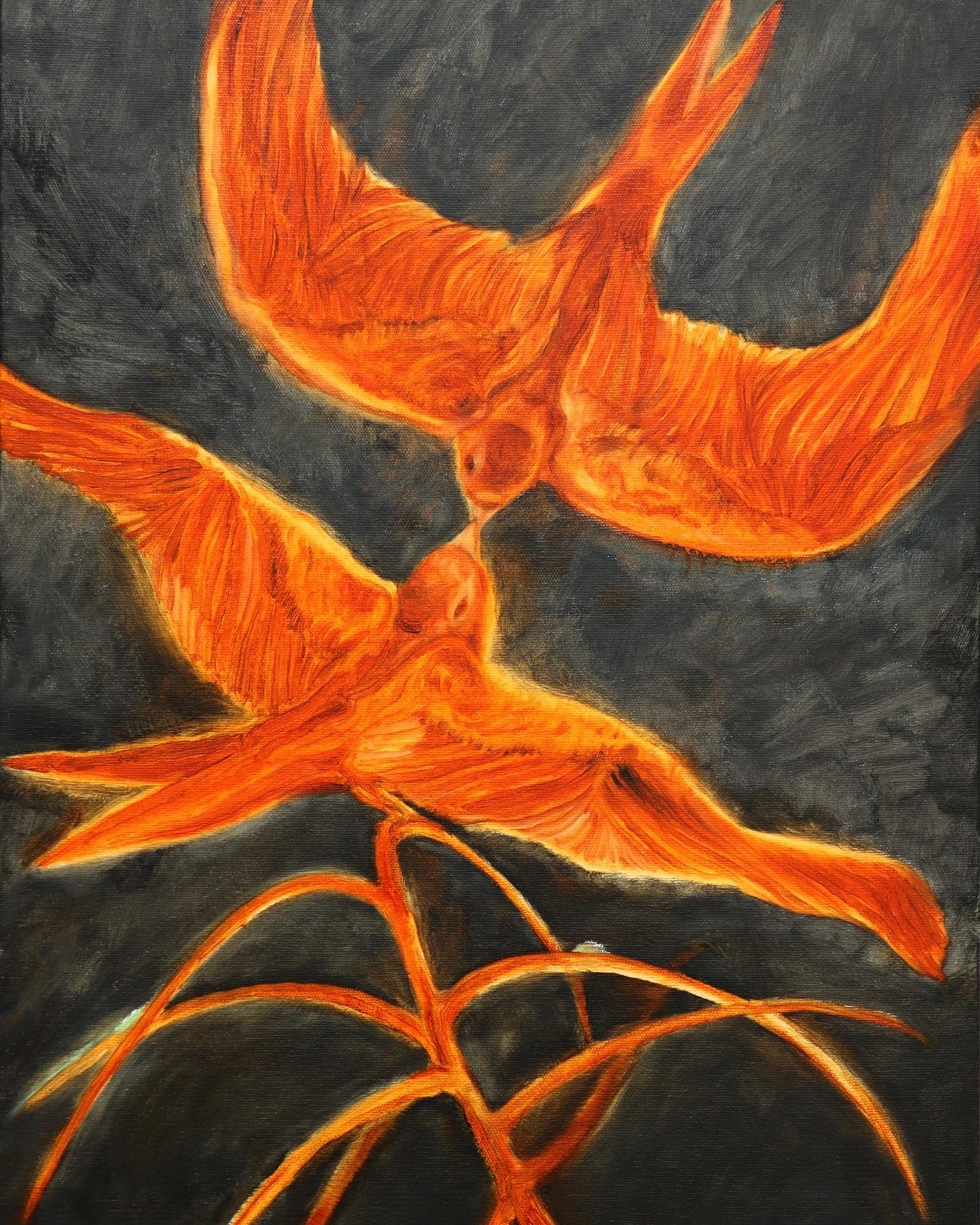IN THE MOMENT: Six Artists from Taiwan














Nunu Fine Art New York is pleased to present In the Moment (即刻, 無須等待), a group exhibition of six Taiwanese artists born and raised in the 1990s. Representing a new generation, these artists came of age with the pervasive influence of social media and thus create their artwork through a uniquely digital lens. As digital natives, the profound impact of growing up in the social media era over the last decade, with its incessant and instant consumption of information, is not only evident in their work but also serves as a defining characteristic that unites their distinct voices.
Taiwanese artists born and raised in the 1990s experienced a period of rapid technological advancement and drastic societal change. As children, they witnessed young adults actively engaged in movements for democracy, human rights, and free artistic expression. As a result, this generation of Taiwanese artists developed unrestrained and spontaneous worldviews and attitudes. While earlier artists focused on themes of human interaction and history, the new practitioners emphasize introspection and individuality.
At a time when digital media permeates both our lives and the visual arts, these young painters operate at the intersection of digital innovation and traditional artistic expression. Through their multifaceted and dynamic visual senses, they reflect on the immediacy and complexity of today’s society.
Ching-Wen Chang, the curator of the exhibition writes:
“Digital media dominating our visual environment has become predominant in our daily life. Technological components such as screenshots, geotags, short videos, and layers of filters are phenomena that younger contemporary artists crave to address and at times to strip away.
If societies are suffering from what Korean-German philosopher Byung-Chul Han calls "the violence of transparency," aiming to eradicate all incommensurability and uniqueness, then perhaps the works of the six artists presented in this exhibition can be seen as positions of resistance against such transparency. The participating artists were born in the 90s in Taiwan and they have developed their styles in the past decade. In contrast to previous generations, this group of painters that are aged between 25-35 years old, convey more free, relaxed, and spontaneous world views and painting attitudes.
Their works can be seen as opaque layers within a transparent society. With highly fluid visual senses, they usher in the message of their generation, which is to be in the moment.”
The exhibition showcases a diverse range of paintings, each informed by the artist’s take contemporary culture. Qi-Heng Xiao reminds us that technology such as Google Maps lacks the emotional warmth and depth of human interaction and the experience of connecting with a place. Guan-Hong Lu addresses everyday absurdity in calm and understated tones. With assertive brushstrokes, Chiao-Han Chueh creates vibrant compositions that radiate eccentricity. Underneath Guan-Jhen Wang’s firm and decisive painterly gestures lies the desire for compassion and real human connection. Fu Ning, depicting endless layers of screens, exposes the obsessiveness of repetitive scrolling and surfing. Bing-Ao Li defies conventional visual language by mixing layers of fictional narratives with reality.
These artists navigate an ever-evolving world, articulating their individual experiences while at the same time offering insights into their generation’s outlook on life. The exhibition highlights the dangers and rewards of the fast-paced, digitally mediated world we live in.
ABOUT THE CURATOR
Ching-Wen CHANG is an art critic, curator, and Associate Professor at the Department of Arts and Design, National Tsing Hua University. Her academic interest lies in Taiwanese art history. In recent years, her practice has engaged in studying the “Taiwanese-ness” in contemporary art and the construction of locally informed theories, through which she explores how the uniqueness of Taiwan-related experiences is embodied in art production, with a special emphasis on the relationship between cultural policy and contemporary art since the 1980s. Chang is a member of the International Association of Art Critics (AICA). Between 2004 and 2010, she was an Executive Editor at Artist. Her recent curatorial projects include Painting: The Nature of Presence (2023) and Cosmos Comsol (2022). Her writing was published in various art magazines and journals, including Artist and Modern Art.
Artist
Chiao Han Chueh
Chiao Han Chueh (b. 1989) is a Taiwanese painter who earned her Bachelor of Fine Arts in Taiwan and her Master of Fine Arts from HFBK Hamburg in Germany. Relocating from Taiwan to Germany inspired her to explore new narratives intertwining her cultural background and personal history. Her work delves into the complexities of human interactions, societal pressures, and the psychological tension between desire and restraint, presenting imagery that is both transgressive and innocent.
Chueh's career has surged recently, marked by solo exhibitions in Taipei, Berlin, and New York City. She has also made notable contributions to group shows in prominent art hubs such as New York, Berlin, Hamburg, Madrid.

Ning Fu
Ning Fu’s (b. 1995) work utilizes images as both form and source material to create her paintings. Most of the images are not produced by her, instead, she sources existing documentation and images from others that are easily accessible online. For her, this deliberate working process reflects a very contemporary experience as it mirrors the deception of ease in capturing our private lives in the public realm of the internet. She is interested in how, through the proliferation of social media, the images that are present on the internet constitute a new reality, where our physical experience and surroundings are not the primary factors in shaping our identities anymore.

Bing-Ao Li
Bing-Ao Li, born in 1998 in Taoyuan, graduated from Taipei National University of Arts. Currently studying at the Master’s Program in Painting at the Department of Fine Arts, Taipei National University of the Arts, and works and lives in New Taipei City. He has been selected for several awards, including the Li Chun Shan Foundation Visual Arts Award in 2023, the CTBC Contemporary Painting Award in 2023, and the CTBC Contemporary Painting Award in 2021. His works have been exhibited at the Kuandu Museum of Fine Art, Taipei. Li’s works try to create some similar feelings as a starting point, from life, virtual social networks, scattered memories of the past... Mediating these past, trying to leave something behind, salvaging ococation innast, trying information liging to sort out and choose, becomes another layer of meaning at the moment the picture is completed. Using various painting methods, the superposition of images and the final material processing of the work, I respond to tempidary and the final idary changsing of the work, I respond to temper-life. complex scenes and elements I encounter in daily life naturally emerge and converge at certain moments. Hoping to seize these charming and relaxing moments. The life scene is regarded as a kind of starting and laying the arranged, and then the painting method is used to conclude, just like the contemporary archaeology from the present moment, the rubbings of life.

Guan-Hong Lu
Guan-Hong Lu, born in 1994 in Changhua, Taiwan, graduated from the Master's Program in Fine Arts at Taipei National University of the Arts, specializing in painting. His work often focuses on the misinterpretations that occur in the transmission of images and the strange, absurd narratives that stem from reality. He is fascinated by bringing together different events and characters within the same frame to create a vacuum of narrative and meaning. He believes that even though such misalignment or loss of meaning might be unreadable, some form of message is still conveyed and received. By deliberately emphasizing misalignment and misinterpretation in his work, he seeks to find gaps in the seemingly rich but actually very flat everyday life, reshaping another way of viewing the core of things.

Guan-Jhen Wang
Speaking of her painting practice Guan-Jhen Wang (b.1991) describes a continuously intense state of being. “I paint incessantly, like the edge of a stocking caught in the toenail, constantly tugging and pulling, causing an uncomfortable pressure that needs constant adjustment; or like trying to take off a sweater that's inside my body, pulling a thread from somewhere and making it smoothly detach from my flesh, transforming it into an external, observable form.” Her paintings often begin with an impulse, that can be triggered by a fragment of text that describes a state or a milieu—something turbulent, muddy, or unbalanced. She uses color, form, brushstrokes and scraping to express these unseen or unthinkable vibrations on the canvas. Painting helps her to focus, and this focus brings her joy. In this concentrated state, she integrates what she calls the paralyzed aspects of daily life that has become an essential part of her painting practice.
Qi-Heng Xiao
Qi-Heng Xiao (b. 1991) often uses Google Maps to find the places he wants to visit. He also uploads photos of these places, and leaves notes, reviews, and comments on them. When he started publishing his notes from his phone on the Google Maps app, he realized that there are considerable differences between reality and what he remembered, and that these differences make the memorized scenery unique. He borrows the phrase "best place" from the manga character Umemiya Ryunosuke (Dragon of the Wooden Sword) from Shaman King, who is always in search for his best place. This "best place" symbolizes a place where he can return to his true self. Xiao’s paintings are prompted by daily life events that he considers to be “concepts that are closer to mistakes.” Faulty scenarios occurring in his thoughts merge with his physical surroundings and form a new scenery that never feels quite right or accurate.


